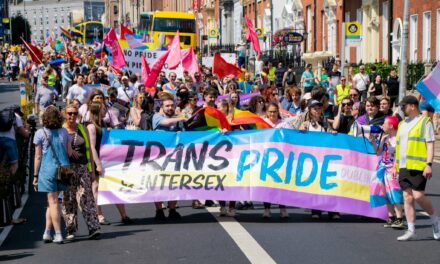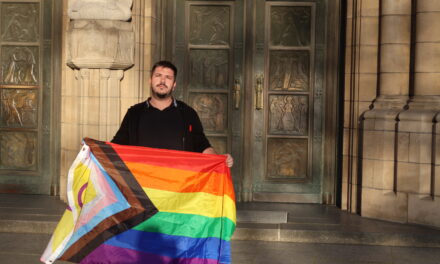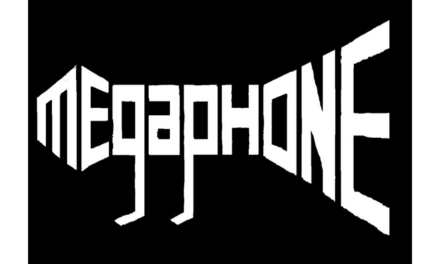Every year, many companies show their support for the LGBTQIA+ cause by taking part in Pride parades, marketing rainbow-coloured products or broadcasting inclusive messages. While this visibility is often seen as a positive step forward for the recognition of LGBTQIA+ rights, it also raises crucial questions about the authenticity and motivations of these corporate commitments. Corporate involvement can exacerbate the concealment of and divisions between gender, race and class, while serving as a convenient career stepping stone for those who claim to support them. We are entitled to ask: how does this involvement influence internal dynamics within LGBTQIA+ communities? What impact does this commercialisation have on actually improving the living conditions of LGBTQIA+ people? Does a movement born of resistance and the struggle for civil rights need to maintain a radical essence? In this article, we’ll examine how infrahumanisation, a cognitive and social process facilitates the division of communities in the service of pink-washing.
Blind spots in social struggles
In social struggles, there may be multiple sources of pressure to maintain a strict, homogeneous ideological line. This can lead to dissenting voices being pushed to the margins of the very communities they claim to represent, and exacerbate the phenomenon of invisibilisation by not allowing members of marginalised communities to fully express their individuality and diversity of perspectives. In 2018, for example, an interLGBT spokeswoman interviewed by TETU magazine about the organisation of the Paris Pride March explained: “There’s a process for placing floats in the procession. When an organisation wants to participate in the pride march, it has to fill in a questionnaire in which a simple question is asked: “Do you support the slogan of the pride march?” If the organisation supports the slogan, it will march in the first half of the procession. If it doesn’t, it will march in the second half”.
Thus, a series of alternative LGBTQIA+ Pride events are emerging around the world, with the aim of distinguishing themselves from mainstream and/or Westernist events often marked by a corporate and commercial presence. These alternatives seek to refocus attention on social and political struggles, as well as offering a more inclusive and critical space, here are a few examples:
- Black Pride (UK), an annual event in London that celebrates black and minority ethnic LGBT people. It highlights the specific struggles faced by these communities and promotes wider inclusion.
- Reclaim Pride Coalition (United States), in New York, the Reclaim Pride Coalition organises the Queer Liberation March, a march that refuses corporate sponsorship and aims to recapture the militant spirit of early pride marches and protest social inequalities.
- Berlin Queer Pride (Germany) also known as Kreuzberg Pride, this march in Berlin is an alternative to CSD (Christopher Street Day) and focuses on more radical political and social themes.
- Trans Pride (UK and USA): events such as TransPride Brighton in the UK and Trans Day of Action in New York focus specifically on the rights and visibility of transgender people, in response to the specific needs of this community.
- Uganda Pride (Uganda), due to anti-LGBT laws and severe persecution Uganda Pride often takes place underground and focuses on solidarity, resilience and visibility for LGBT people in a very hostile context. “In Uganda, where being gay is still a crime. Pride is a celebration, but it is still most definitely a protest.”
- Mumbai Queer Azaadi March (India), although Mumbai pride has gained in popularity, the Queer Azaadi March focuses on the political and social aspects of LGBT rights in India.
- Aswât and Al Qaws, two Palestinian groups working openly to promote “sexual diversity” in Palestinian society, were founded in 2001 and 2007 respectively by two Palestinian women from Israel. Aswât has also published several collections of feminist and lesbian articles in a collection officially launched at its first public conference in Haifa in 2007. This event, under heavy police protection
or some, the visibility of these perspectives poses a threat to the credibility of LGBTQIA+ movements. For example, in an article in Marianne magazine entitled “Pride des banlieues: le mouvement LGBT est débordé par un identitarisme radical” (Pride in the suburbs: the LGBT movement is overwhelmed by radical identitarianism), a self-identified feminist and LGBT rights activist expressed her anxiety.
“Freedom of sexual orientation, a fundamental right? A priori, it doesn’t speak to them. On the other hand, ‘Islamophobia’, police repression and poor housing are priorities.”
In this way, she sidesteps the question of the accumulation of these discriminations and their effects on the daily lives of the individuals concerned, and therefore the need to make their existence visible within movements fighting for LGBTIQA+ rights. There can be no true emancipation without considering the whole range of dominations that a person, or a community, may experience. But isn’t that one of our cognitive limitations? Not experiencing certain forms of discrimination directly makes them non-existent, so it’s hard to develop a sense of empathy for the people who suffer them. These are in the blind spots of our thinking.
“I gave up this year, because after fighting so hard, my health couldn’t take it any more. There’s been an accumulation of material and moral things,” says Roxanne, a transgender and disabled student interviewed by France Info.
The exclusion of intersectional perspectives
Intersectionality, a concept developed by Kimberlé Crenshaw, emphasises that experiences of discrimination and oppression are multidimensional and interconnected. Ignoring intersectional perspectives in social struggles can lead to infrahumanisation by simplifying the experiences of marginalised communities. For example, black women may face unique forms of oppression that are neither fully captured by feminist nor traditional anti-racist struggles.
Infrahumanisation refers to the cognitive tendency of individuals to deny members of an external group the complex emotions and characteristics considered properly human. This concept has been widely explored by social psychologists such as Jacques-Philippe Leyens, Stéphanie Demoulin, Jeroen Vaes and others since the 2000s. They have demonstrated that people have a natural inclination to associate members of their own group with specifically human traits and emotions (such as compassion, shame or love), while associating members of outside groups with more basic, animal emotions (such as anger or joy), which would justify diminished basic needs and therefore restricted access to the law for certain communities, closer to “wild beasts” than human beings.
As Leyens writes in his book L’humanité écorchée (2016), “It’s enough for individuals to have to form a group for the purposes of an experiment, and to have to reflect on what differentiates them from another group, for infrahumanisation to manifest itself. We are prepared to deprive of humanity people with whom we have no disagreement whatsoever, but in relation to whom we must show our dissimilarity”.
These divisions are often exploited by the private sector through pink washing practices, where companies promote an image of support for LGBTQIA+ rights while perpetuating discrimination against certain members of marginalised groups (discrimination in hiring, housing, etc.). These companies reinforce the infrahumanisation of those who don’t fit this mainstream image, and dilute demands for social equality. In this way, the corporate recuperation of LGBTQIA+ Pride only accentuates fractures within communities, diverting attention from struggles for genuine equality and fights against systemic discrimination.
Strategies to reduce subhumanisation
Promoting education and awareness
One way is to educate individuals about cognitive biases and power dynamics. Workshops, seminars and training on diversity and inclusion can help raise awareness among activists and allies of the dangers of infrahumanisation and how to limit it.
Adopt an intersectional approach
Integrating an intersectional perspective into social struggles allows us to recognise and value the complexity of the experiences of marginalised communities. This means listening to and giving visibility to the voices of members within marginalised communities, and understanding how different forms of oppression interact and reinforce each other.
Encouraging authentic representation
Encouraging authentic and nuanced representation of marginalised communities in media, popular culture and political discourse is crucial. This includes promoting content created by members of these communities, and representing their experiences in complex and multidimensional ways.
Promoting active, egalitarian solidarity
Solidarity must go beyond being merely performative and should involve active, egalitarian collaboration. Allies must position themselves as partners in the struggle for social justice, supporting initiatives led by marginalised communities and respecting their autonomy and expertise.Infrahumanisation is an insidious phenomenon that can undermine even the best-intentioned social struggles. A germ present within us, it awakens as soon as we are organised into groups, and prevents us from apprehending reality and its complexity by reducing our capacity for empathy. By becoming collectively aware of our cognitive and social functioning, we can reduce the blind spots that can perpetuate this form of dehumanisation. Activists and allies can work to create movements that are more inclusive, equitable and respectful of the dignity of all people. The struggle for social justice requires constant vigilance and a willingness to challenge our own perceptions and practices. To conclude, Emma Goldman quotes Auguste Spies: “Our silence will speak louder than the voices you stifle today.”
Illustration: Liou
Article translated from French





